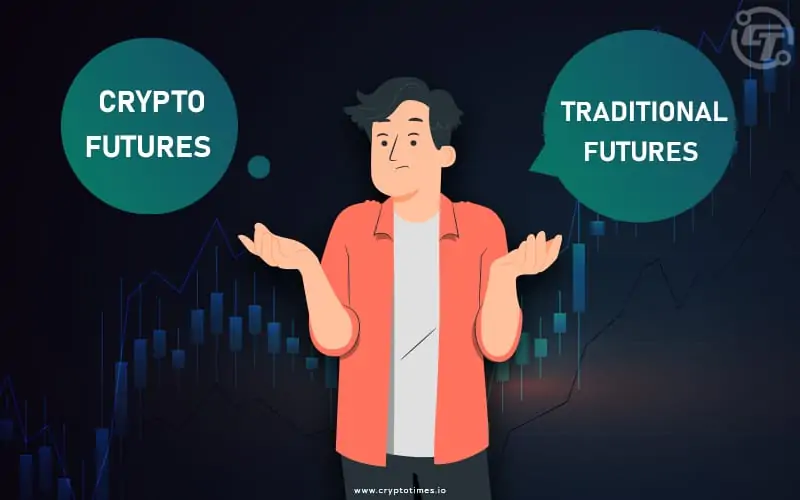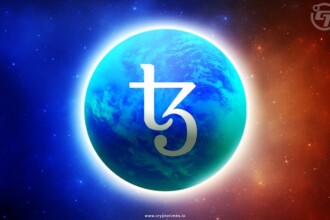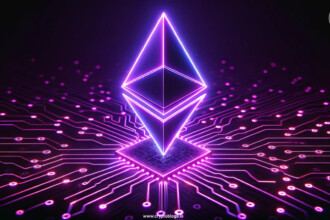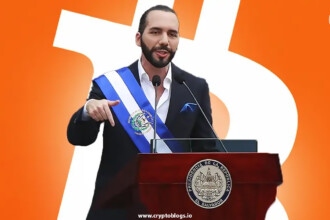There is a new kid in the cryptocurrency realm called crypto futures, challenging the dominance of traditional futures. Like other crypto trading products, this one also offers abundant benefits, making it different from traditional futures. But before we dive into the clash between the old and new guards, you must know what Future contracts entail.
A futures contract is an agreement between two parties to buy or sell a commodity at a specific price on a future date. For instance, if you think the price of a commodity is going to go up and you want to buy it at today’s low price even though you might not need it until some point in the future, you can enter into a future agreement with the seller by paying a small fee upfront to secure the contract.
So, this is a way to lock in today’s price for things you intend to buy later.
What are Traditional Futures?
Traditional Futures trading is an conventional practice in which parties mutually agree to purchase or sell assets at a predetermined price on a future date. This protects buyers and sellers from price volatility.
Initially, the concept of future contracts was introduced for commodity traders exposed to the price volatility of commodities.
Imagine busy trading floors or computer screens filled with traders constantly buying and selling. They are locked into contracts to buy and sell various commodities, which could be wheat or oil that will be produced in the future. Or they could be financial products like stock index funds or foreign currencies that will change in value later.
Take, for example, a corn farmer who may wish to sell his corn in the future to lock in a price for their upcoming harvest. This protects them from falling corn prices between now and harvest time. On the other side, a cereal maker may want to buy corn futures to lock in costs and avoid paying more if prices rise.
Now, between the time this seller locks in the price and the time the buyer locks in the cost, both parties have been using leverage to amplify their gains.
Leverage means you can put down a small deposit and borrow the rest of the money needed to make a much bigger trade. This gives you more exposure with a smaller upfront investment.
Suppose you have x amount of money, and you select 5x money to buy a trade. By opting for 5x leverage, you can become eligible to buy that trade.
Now return to our example.
Scenario 1: If Corn Prices Go Up
The corn farmer sign corn futures contracts to lock in a price for his harvest at $4 per bushel. As the market price rises to $5 per bushel, he still sells at the agreed-upon $4 rate, securing his income.
Similarly, the cereal maker locks in the cost of corn at $4 per bushel. When market prices rise to $5 per bushel, The cereal maker still pays the agreed-upon cost ($4), which is lower than current market price. It means both both stays untouched at the end of agreement.
Scenario 2: If Corn Prices Go Down
Again, The corn farmer locks in a $4 per bushel price with corn futures contracts. When the market price drops to $3 per bushel, he sells at the agreed-upon rate, protecting his income.
The cereal maker buys a $4 per bushel cost for corn due to agreed-upon price. As market prices fall to $3 per bushel, ABC Cereals still pays the agreed-upon cost, maintaining control over production expenses.
In a nutshell, the future contract is a win-win agreement for both parties to hedge against price movement.
What is Crypto Futures Trading?
While crypto derivatives are a relatively new type of future contract that allows investors to speculate on the future value of cryptocurrencies like Bitcoin and Ethereum, they apply the same concept as traditional trading futures.
One attribute of Crypto futures is that they take place online via crypto exchanges, thereby allowing many investors, traders, or enthusiasts to participate at the same time rather than channeling their funds through many corporations.
The traditional financial market is entrenched in decades of history, and the perpetual crypto features aim to reshape exchange trading by offering alluring potential—the chance to tap into digital currency volatility—by proving traditional market benefits such as leverage and liquidity.
Like the former, this new trading function in the crypto realm allows traders to bet on the future price of a cryptocurrency asset without having to actually own it. For example, a Bitcoin contract allows an investor to lock in a price to buy or sell bitcoin on a future date. So, if you think Bitcoin will rise, you can buy a futures contract to purchase it later at the current price. If it does go up, you will profit from the locked-in lower price. But for that reason, you need to know how to trade futures.
Crypto futures were first introduced in the Chicago Board Options Exchange (also known as Cboe) in late 2017, but unfortunately, they failed soon. In the same year, the Chicago Mercantile Exchange (CME) introduced another Bitcoin futures contract, providing mainstream access to Bitcoin futures. Other cryptocurrency futures platforms have also since emerged.
Also Read: Coinbase Secures US Approval For Crypto Futures Listing
So, if your question is whether to cling to time-tested conventional trading or ride the crypto roller-coaster, Your trading strategy depends solely on understanding the differences between these exchange-trading futures.
Crypto Futures vs. Traditional Futures: Key Differences
Crypto contracts may sound like just another financial derivative, but in reality, they represent a radically distinct narrative compared to traditional futures contracts. From the volatile cryptocurrencies underlying them to their cutting-edge, digitized trading, here are some differences to note:
| Traditional Futures | Crypto Futures |
| Traditional Futures are based on commodities such as (oil, wheat, gold) and financial assets (e.g., stock) | This derives value from digital and decentralized currencies such as Bitcoin, Ethereum and other Altcoins |
| They are structures with a defined end point for asset price, quantity, delivery, or financial settlement. | While Crypto Futures contracts do have fixed expiration dates specified in the contract terms, they are still a suitable option for those seeking exposure to cryptocurrencies without the need for personal digital asset custody. |
| While traditional futures were historically more popular among institutional investors due to their complexity and capital requirements, many retail trading platforms now offer access to traditional futures for individual traders. | Crypto Futures, on the other hand, have been more accessible to retail investors from the beginning due to the nature of the crypto market. |
Apart from this, there are some other differences to keep in mind include:
Regulation
Traditional hedge markets operate within long-established regulatory frameworks that enforce rules and standards to protect against unlawful behavior. While bringing order, oversight comes at the cost of slowing processes like exchange approvals before trades can be executed. In contrast, the cryptocurrency realm is largely unregulated.
Cryptocurrency investment exchanges do not yet face the compliance burdens and delays of seeking regulatory green lights. This allows faster trade execution, a major advantage given the volatility of cryptocurrencies. But the speed also raises risks without oversight guardrails.
Also Read: Crypto Regulations: Protector or Destroyer of Crypto Innovation?
Volatility
Though conventional markets see their share of turbulence, the volatility pales in comparison to the often-wild swings endemic to cryptocurrency futures trading. Cryptocurrencies, as a new and speculative asset class, suffer from greater instability rooted in immaturity.
As relative newcomers, crypto markets remain more susceptible to dramatic price fluctuations and crashes, lacking the battle-testing and institutional participation that steady mature markets over time. However, stability rarely emerges overnight.
Open Market Hours
Traditional trade transactions are only permitted during typical market hours, which are around 13 hours per day. During big external events that cause asset volatility, trading halts, restricting profit possibilities from unanticipated price swings.
In contrast, bitcoin trading are available 24 hours a day, seven days a week. Their non-stop session allows traders to respond immediately to news triggers or daily price swings. The always-on nature provides greater flexibility but necessitates more careful monitoring of situations.
Final Note:
As we’ve discussed the fundamental differences between these two worlds, it’s evident that each presents its own set of possibilities as well as obstacles. Thus, there is a need to fully understand the changes and what is at stake to be sure if you want to transition into the new financial trading system or use both.
The decision between a cryptocurrency and a conventional commodity is determined by your risk tolerance, trading objectives, and trust in the transformational power of blockchain-based technology. While regular futures provide stability and regulatory protection, crypto futures entice with unprecedented freedom and the possibility of exponential growth.
Finally, the choice is yours to make, but keep in mind that the most intelligent investors frequently diversify their investment portfolios, leveraging the benefits of both environments to manage the volatile trading terrain. As these two worlds coexist and influence one another, the future of futures exchanges promises to be an exciting trip in which the lines separating traditional and crypto blur and creativity knows no bounds.







